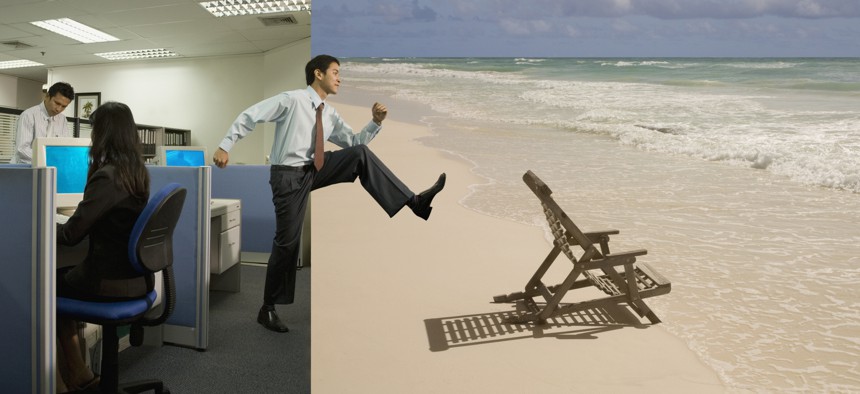Why So Many People Retire at the End of the Leave Year
It’s all about lump-sum payments.
The Office of Personnel Management received its usual surge of retirement applications at the end of 2021 and the beginning of 2022. Over the first three months of this year, OPM received 35,549 new claims for retirement benefits. At the end of March, there were 36,349 unprocessed claims in the inventory at OPM’s Retirement Operations Center. Cases that take longer than 60 days to process are taking an average of 128 days.
It’s good advice to hope for the best but prepare for the worst in the case of waiting for your retirement application to be processed. Anecdotally, I’ve heard a lot of reports of delays, and statistics show that over the past two years those delays have increased.
The end of the leave year has traditionally been the most popular time for federal employees to retire. The reason is that a retiree can get the maximum lump sum annual leave payment for retiring at the end of the leave year, which coincides closely with the end of the calendar year.
Here are the benefits of retiring on Dec. 31 for those under the Federal Employees Retirement System and Dec. 31 or Jan. 1, 2, or 3 for those under the Civil Service Retirement System or CSRS Offset:
- Receiving a lump sum payout of annual leave provides some cash on hand to cover living expenses while waiting for your retirement benefit application to be fully adjudicated. During the retirement processing time, most recent retirees will receive interim or partial retirement payments as well.
- Deductions from the payment of annual leave are fewer than the deductions from a typical biweekly salary, because this payment is not subject to deductions for retirement or insurance.
- Employees who retire before the end of the current leave year will be paid for the balance of annual leave in their leave account. This might include “use or lose” annual leave. As long as you retire before the new leave year begins, you won’t lose the annual leave that is above the carryover limit.
- Employees must use their “use or lose” annual leave before the new leave year begins or risk forfeiting all but the carryover limit, which is 240 hours for most federal employees. Here is an example of how someone retiring on Dec. 31, 2022 could be paid for 448 hours of unused annual leave: Carry over 240 hours from 2021 into 2022; earn eight hours of annual leave (for employees with 15 or more years of service) each leave period; and don’t use accumulated leave during 2022. That way, each eight-hour accrual is added to the balance of annual leave that was carried over from 2021.
Next week, we’ll look at ways to maximize your lump-sum leave payment when picking a retirement date in the coming years.








